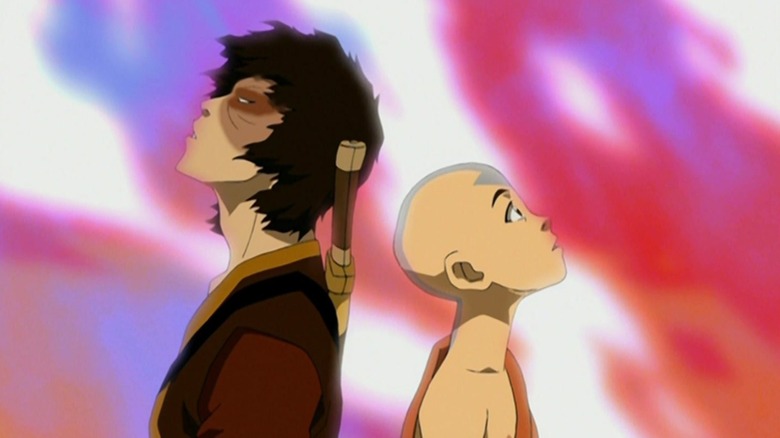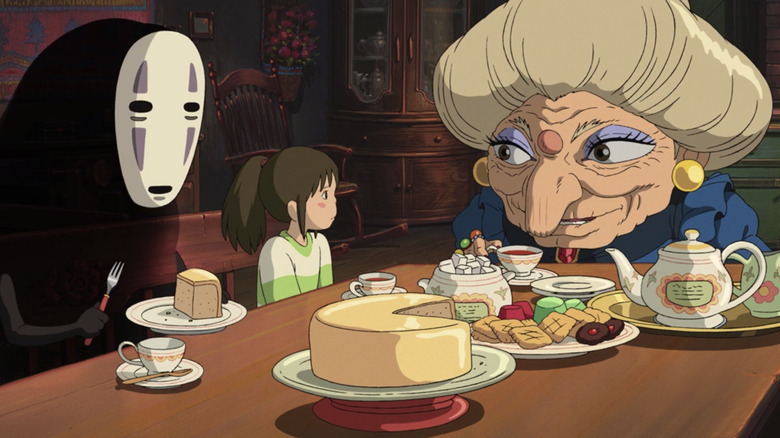This Avatar: The Last Airbender's Animation Rule Was Inspired By Studio Ghibli
The moving set pieces, universal themes, and profound character development are just some of the ways that set "Avatar: The Last Airbender" apart from other animated shows. Airing in 2005, the series remains a classic, leading to live-action adaptations and future films from Avatar Studios. While the world of "Avatar" is all its own, creatives Bryan Konietzko and Michael Dante DiMartino would be the first to admit their influences from the hallmark Ghibli Studios.
"We wanted to do a love letter to anime, and not just copy it," DiMartino said on the "Braving the Elements" podcast. "In some ways I know it would have looked better if I had just copied stuff, but I was trying to do our little crummy version." Considering many view "Avatar: The Last Airbender" as the best animated show ever, crummy would not be a great descriptor for it. But love letter is a quantifier many would agree with.
In addition to the heartwarming stories woven throughout the show, the animation demonstrates warm and inviting visuals just like Japanese films. The studio behind the best animated film, "Spirited Away," also tells stories about fantastical characters with sweeping backdrops. But it isn't just surface-level comparisons to Hayao Miyazaki's landmark films that "Avatar" creators took to heart.
Studio Ghibli always starts with hand drawn animation
In any animated feature or series, visuals are clearly a key component. But unlike other shows of its ilk, the visuals of "Avatar: The Last Airbender" elevate the series above and beyond. Bryan Konietzko affirmed that he gravitated toward oil paintings which is what makes the sweeping landscapes of the series so impressive. But the co-creator also gave credit where credit is due.
"There's this great Miyazaki rule," Konietzko explained during an in depth look at Avatar Studios. "Everything you do at Studio Ghibli, even if it's going to end up 3D, has to start as a handmade piece of art." This was a rule that the production of "Avatar" adhered to in the early days. Storyboards were all hand drawn, just like in Studio Ghibli films. And at Studio Ghibli, this rule was paramount.
"I believe that the tool of an animator is the pencil," Miyazaki told The New York Times diplomatically on the subject. Other comments he has made in the past have been less diplomatic. In light of this new age of animation, many artists animate entirely through computer programs and sometimes artificial intelligence.
While Miyazaki has stated he disapproved of these practices in the past, Konietzko is somewhere in the middle. Technology can be used, as long as it is to enhance what is already there. "I'm not the most technologically minded person," Konietzko noted, "but I'm pro-technology if it's going to make the art better."

